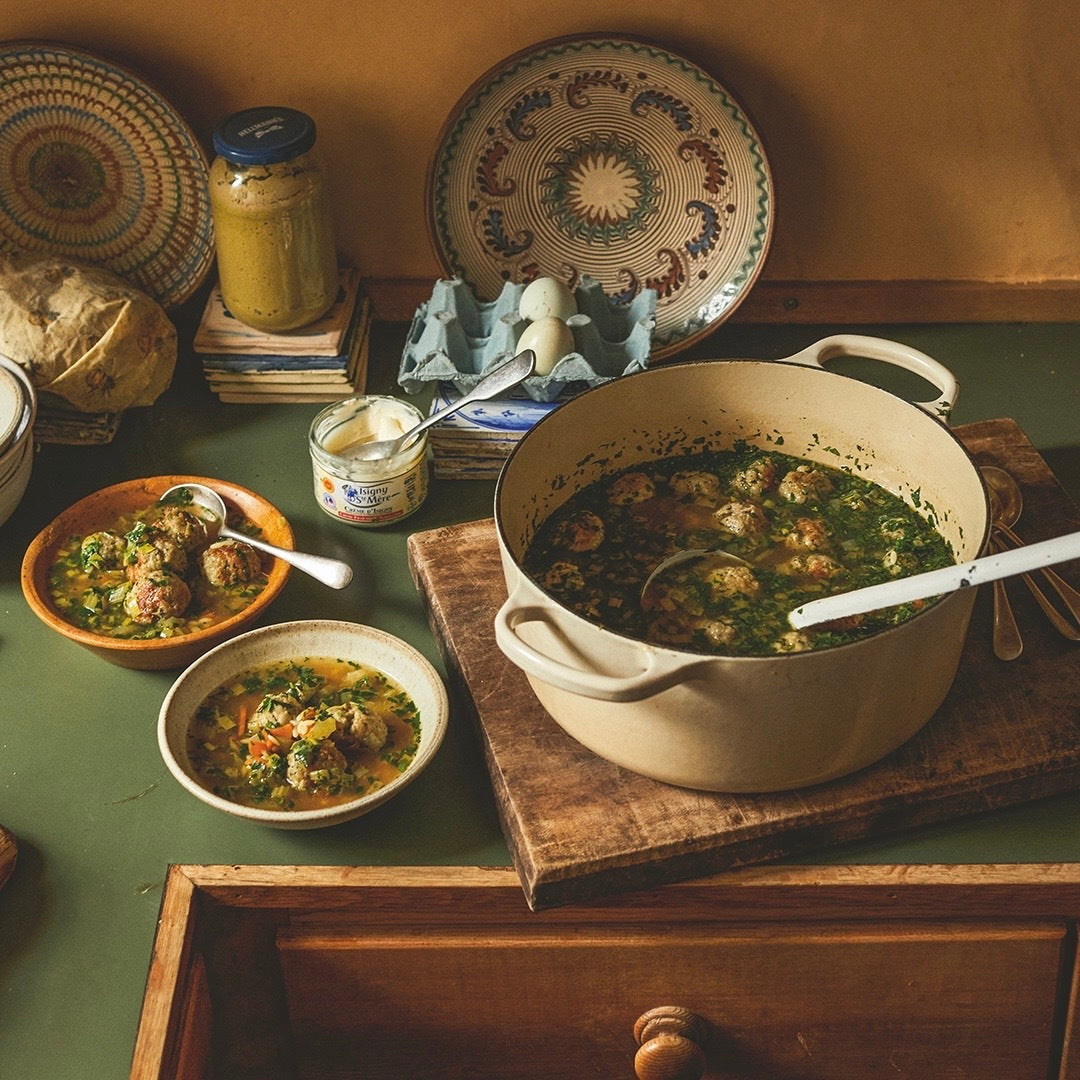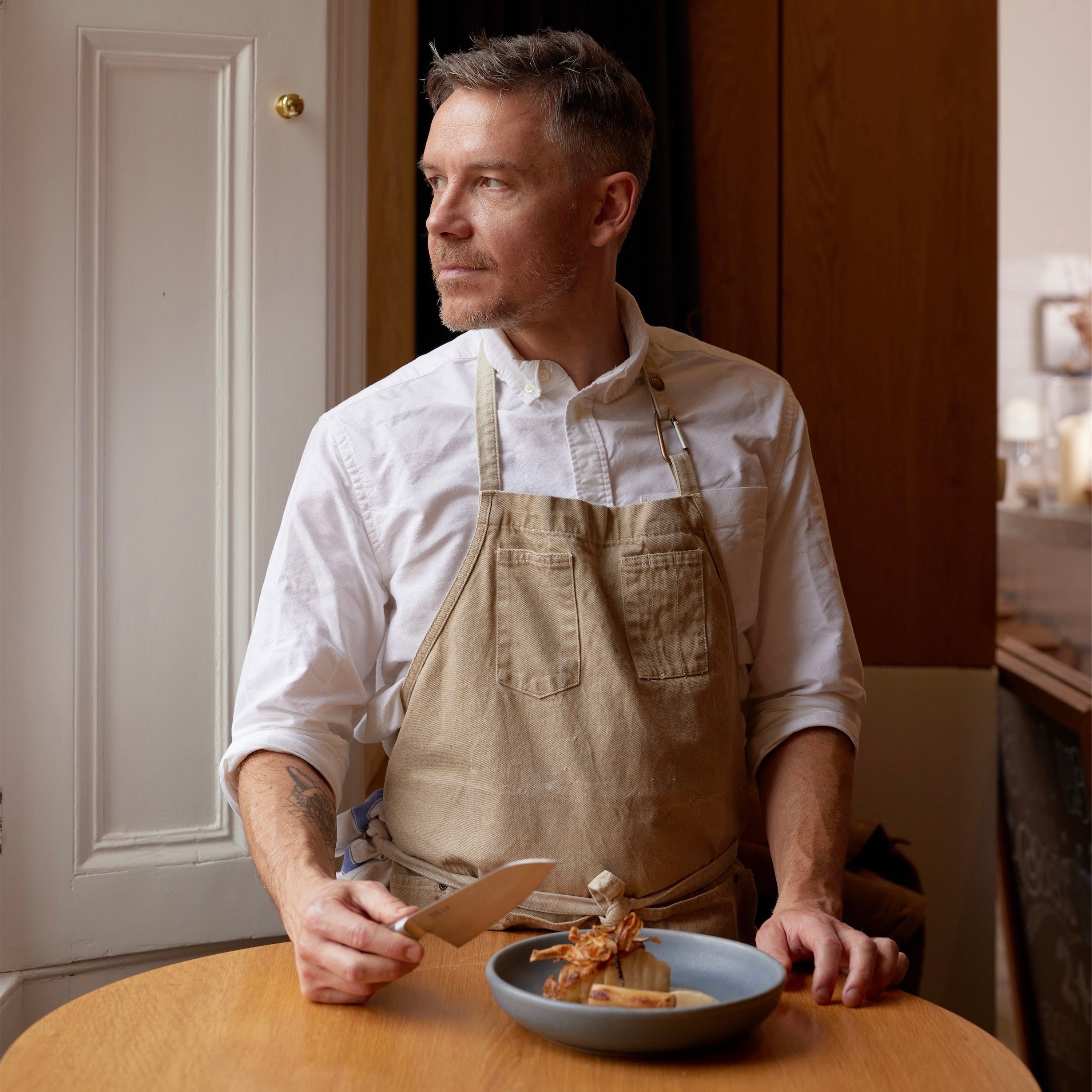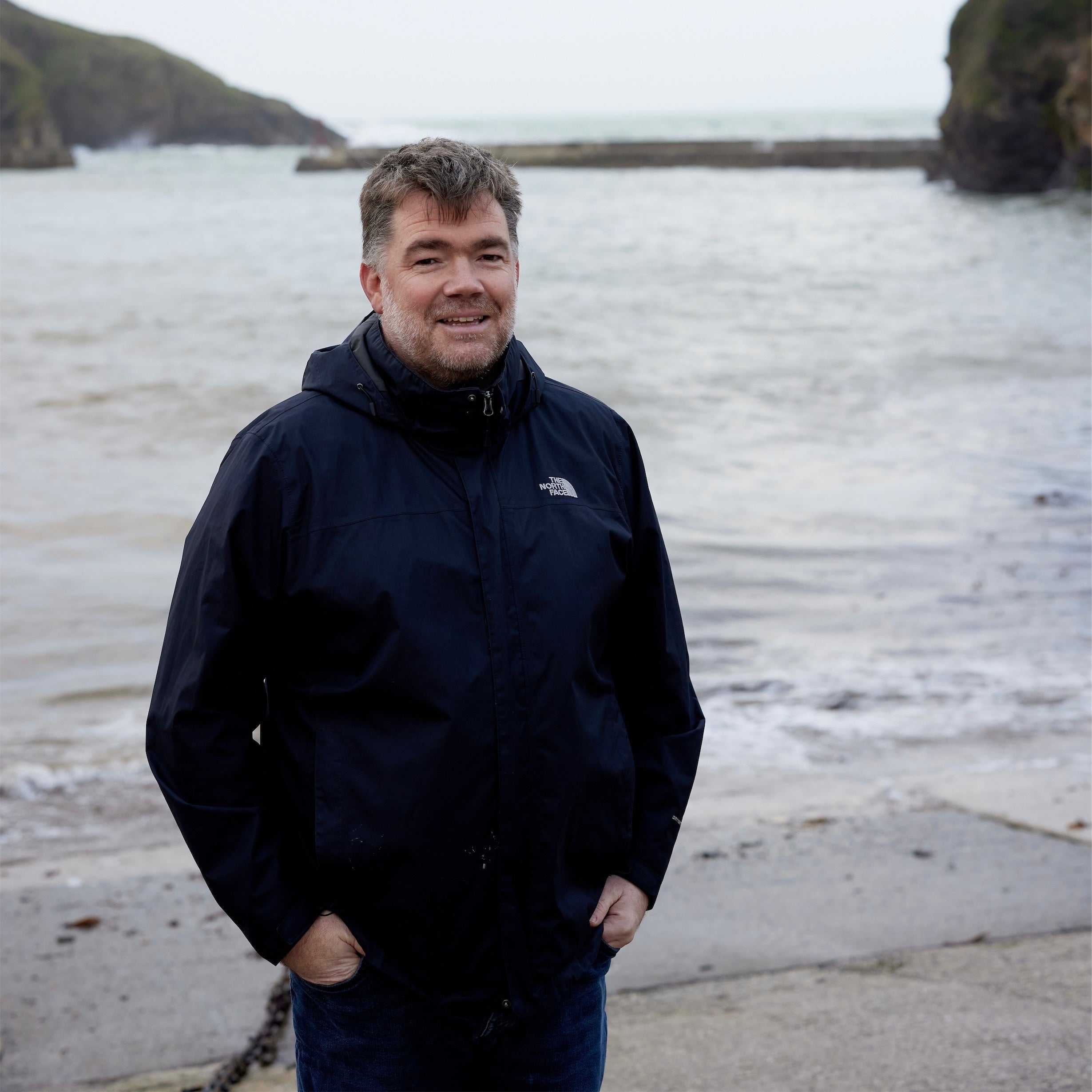
By Bert Beagley-Brown.
Tom Calver is Director and Head Cheesemaker at Westcombe Dairy in Somerset. I visited this beautiful place to see the dairy, cheese store and shop. I spoke with Tom who divulged the fascinating history of the place. Oh, and of course I also met ‘Tina the Turner’ – the world’s first Cheddar robot.
Tell me a bit about the history of Westcombe Dairy.
Well, the Brickle family started making cheese here on site around 1879. They had just twelve cows and sold their products up to London. Cheese was made with excess from milk production which was the main business. Hundreds of Somerset farms did the same thing. We worked with an excellent cheesemaker named Edith Cannon and managed to win quite a few awards. Then we pushed expansion process – this was around 1900 sort of time. After WWI, changes here reflected those of the wider food industry. There was pressure on UK agriculture to increase production in order to feed the people after the war. During WWII, the Government discouraged “less efficient” small farms and many moved into larger creamery style formats. We started taking milk from other farms and grew, adding lean-tos to increase size quickly. At one stage we were pulling milk for thirty farms in the area so it was a large concern. At the time there was an influx of rindless square block cheeses from America, Australia and NZ which were vacuum packed and actually sold at a premium. We couldn’t compete with that so we decided to join them and make block cheddar. We’d sell it to the Cheese Marketing Board in Wells who stored it and marketed it as brands such as ‘Cathedral City’. We didn’t know who the customer was. In the 80’s the CMB was disbanded. We felt that what we were doing didn’t really reflect what we stood for as farmers and decided to change our approach. My father is a first generation farmer who came here fifty six years ago. He ran Manor Farm locally and the owners asked him to farm two more farm and he was asked to take over the cheese operation in 1983. We re-evaluated the business and in 1995 converted a unit for Emma McDonald who was making chutney and jams on site. We decided we’d make raw milk cheese to go with the chutney. Milk prices had dropped, pasteurised block had become a commodity and we needed to differentiate. But Dad struggled to sell our Cheddar as delis already had many on offer. Farmers are brilliant and resourceful but disconnected from consumers and their tastes.
So how did you get involved in the business?
I grew up on a farm but vowed I’d never go into the business because dad worked too bloody hard. I did a year of A-levels but decided that wasn’t for me so I moved to Brixton to do a diploma in cooking. I did some stages at Launceton Place and Kensington Place and then cooked for top bankers like Bob Diamond (MD of Barclays Capital). After a while I lost interest in cooking for bankers! At that same time there was a renaissance of artisan cheese in Britain so that’s when I got back into cheese. I washed up in the Dairy in Somerset for six months then spent six months in Neal’s Yard back in London where I was pretty much brainwashed in the ways of selling artisan cheese. It was brilliant training.
After Neal’s Yard, I moved back to Somerset again to work with dad and the business evolved once more. I realised the cheese we were producing wasn’t actually that good. I decided to really understand the cheese making process so that I could help us create a much better product. We employed a biochemist called Jemima Cordal to deconstruct recipes from 1870. We set about understanding the microbial diversity of the farm and its milk together with all the moral aspects of that. It was interesting: because quality and flavour were our biggest focus, the moral challenges slotted into place. For example, if you put huge amount of fertiliser down or start monocropping then the quality is compromised. We are pursuing a more regenerative style of agriculture now which naturally produces a better result.
Could you walk me through the process of how cheese is made please?
Well, milk is made of water, fat, protein, bacteria and minerals. You add lactic acid producing bacteria which convert lactose into acid. Then you need to extract water by adding the enzyme rennet. That charges the milk into positive and negative particles that attract so they combine and form a solid. The solids form curds and leave the liquid as whey. Then you texturize it either by heating it or scoop it gently into a mould if you’re making a soft cheese. Then you add salt. You’re looking at acidity production over time and also taking out moisture. You might choose to pasteurise milk which annihilates all the bacteria and increases shelf life if you’re producing large volumes. A lot of those bacteria are actually good, though. If you’re making cheese properly with raw milk, these good bacteria will win the fight for food and the bad bacteria will starve. Winemakers talk about ‘terroir’ where the wine’s flavour represents the conditions, soil, weather etc. of the vineyard. It’s exactly the same with raw milk cheese - the flavour comes from the qualities and bacteria profile of that specific day’s milk. We love the variation. Using raw milk also gives you more complex depth of flavour - different flavours appear at different times in your mouth and linger for longer.


Do many other local farms also use raw milk?
There’s a great community of local Somerset producers using their own raw milk and we’re all really friendly despite being competitors. We know our cheeses are very different from each other as they’re so directly products of the cows, weather, location, grass etc. With mass production, you want something that is completely reproducible and consistent and that strips out all flavour and personality – commodity cheese is pretty much just a fuel.

Could you tell me a little about the different types of cheese?
All cheese has four components – milk, rennet, culture and salt and you can make any cheese with those four things. The type you get depends on the cut size, the shape of the vat, duration and intensity of heat and the acidity curve. If you’re producing a blue cheese, for example, you start with something quite brittle. You don’t press it because the holes and fissures would disappear. Those holes allow the blue penicillin mould to penetrate into the cheese – it thrives when in contact with oxygen. With soft cheeses, you’ll add more rennet and you’ll set the junket a bit hard. Then you scoop the curds out and put them into a small mould, turn it a few times and dust with salt to promote specific moulds to grow. As a cheesemaker, your role is to create the conditions to allow the right type of mould to grow. You are trying to drop the pH during the cheesemaking process (increasing acidity) but with soft cheese, the mould on the outside will bring the pH back up which is what makes the cheese soft.
Over the last 50 years, there has been a push for speed in the production process. If you make cheese quickly there’s a risk that the pH curve will be steeper therefore and harder to control. The old-school recipes we are working with are slow. This gives us more control over the maturing of the cheese. It’s the same story with bread or charcuterie – you can taste the difference between a fast or slow process.
The old-school recipes we are working with are slow. This gives us more control over the maturing of the cheese. It’s the same story with bread or charcuterie – you can taste the difference between a fast or slow process.



Is it true that there are actually mites that eat the mould on the outside of the cheeses?
All mould-ripened cheese that’s left for long enough attracts cheese mites which eat the mould. That’s why we have our cheese robot ‘Tina the Turner’ which not only turns the cheeses but brushes mites off the surface at the same time. When we show people around, we always start in the dairy. Mass produced cheddar is made by an automated machine called a Cheddarmaster which can produce one hundred tonnes of cheese in a day with only two people running it. With us, the process is totally different. When you’re working with raw milk, the milk is changing every single day. You need a human to react to textural changes and modify the process as necessary. That’s what makes it artisan cheese and there’s a lot of focus on the people. In our store, by contrast, there’s no so much skill. Turning 25kg cheeses by hand was a horrible job – actually painful. We hoovered them with a Henry.



Traditional cheeses in Europe are mainly turned by robots but cheddar has never been. When block cheeses appeared they didn’t need to be turned so no cheddar turning robot was ever developed. We decided to be the first ones to do it and having the robot has taken a lot of hard work out of the process. I actually like the juxtaposition of an an old traditional production method with an ultra modern robot facilitating it. We’ve also inserted RFID tags into the cheeses to identify individual ones
I actually like the juxtaposition of an an old traditional production method with an ultra modern robot facilitating it.
My dad and I visited France and saw an extension to a Napoleonic Fort which inspired our new underground cheddar store. I’ve always liked the idea of maturing cheese under ground. Our old store had massive fans fighting the loss in humidity caused by the refrigeration. Our new store is cooled naturally by the ground and the spring water running through. We just need to put a few buckets of water down to keep the humidity up.
For somebody who just eats mass produced Cheddar all the time and maybe a brie at Christmas do you have any tips for broadening your horizons?
First of all, don’t broaden your horizons too far because some Cheddar is bloody brilliant. Broadening your horizons is all very well but actually there are a lot of better quality, more interesting local cheeses on your doorstep. With raw milk cheese, you’ll experience variation from one day to the next.
Any tips for using cheese in cooking?
I’m getting more and more into incorporating cheese into cooking. About fifteen years ago there was a prevalent purist attitude that good cheese should be simply served on a cheese board as it was too good to waste in cooking. I think that’s absolute rubbish. Good cheese can really elevate a dish. We’ve started making smoked cheese which is really amazing with pulled meat, for example. We’re making ricotta which is a massive flavour carrier as well as having its own fantastic flavour – so perfect for quiche or pasta.
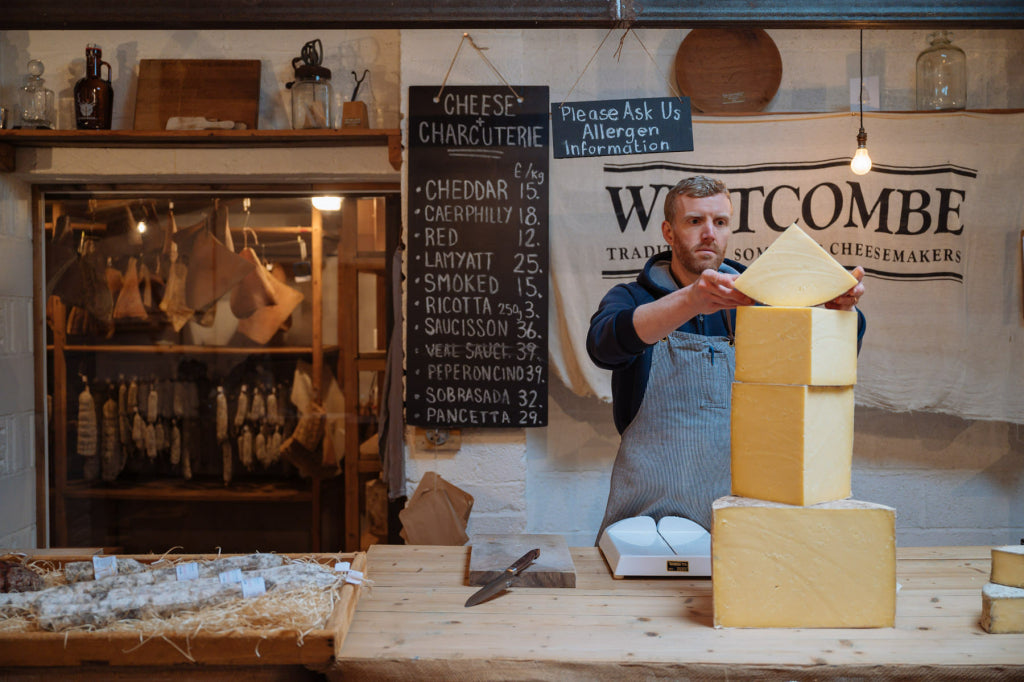
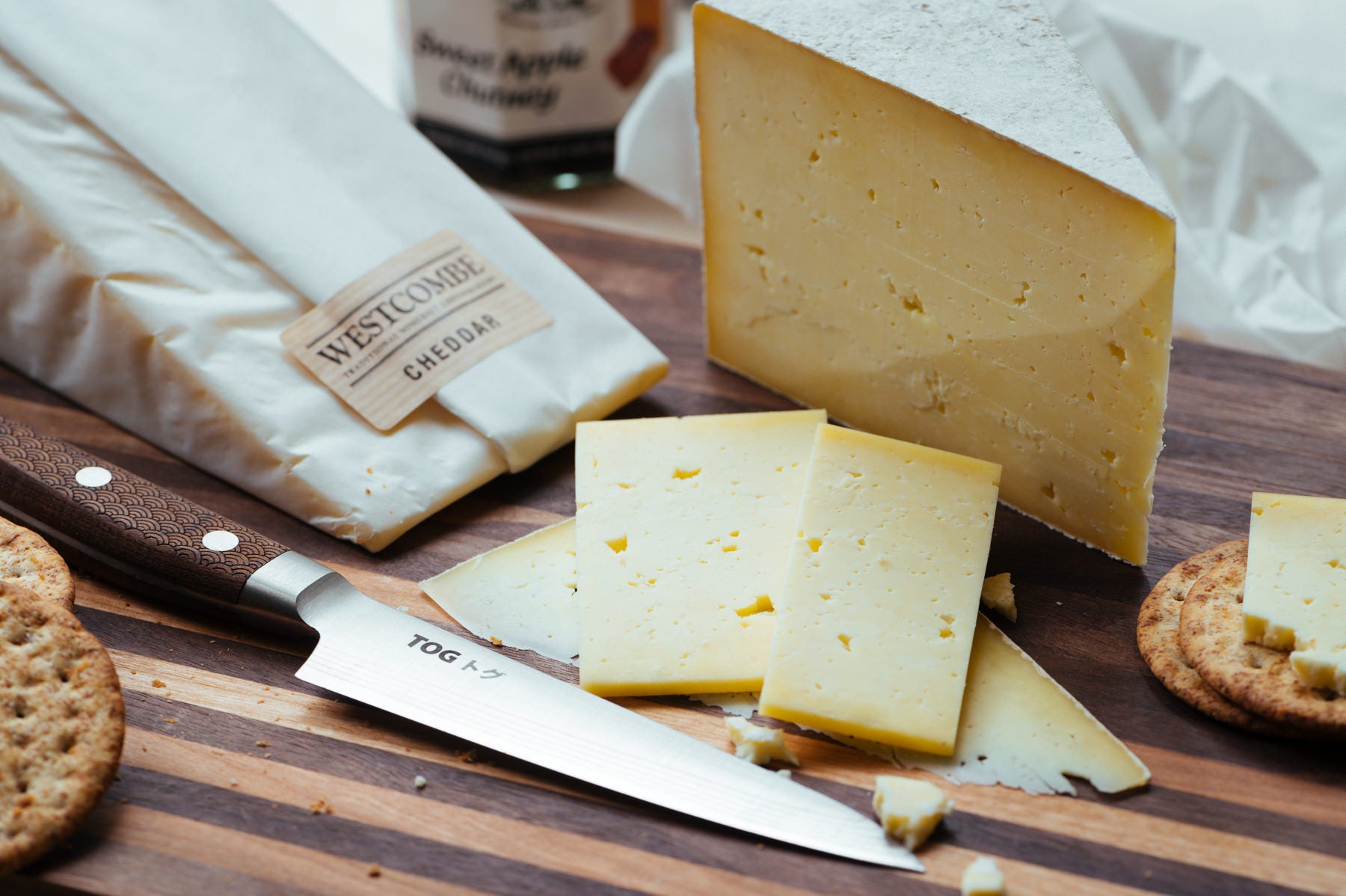
If people want to get hold of your amazing cheeses how can they do that?
We have an online shop, westcombedairy.com/cheesestore a shop in the yard here in Somerset. There are retailers around Bristol such as The Bristol Cheesemonger and in London there is Neal’s Yard, Paxton & Whitfield and in Bath - The Fine Cheese Co. If you’re cheffing then Harvey & Brockless and Rowcliffe. Sales is about relationships with your customers so that we can understand what flavour profile they like and help evolve our products. We’re proud of our customers.

Such a fascinating insight into the world of cheese, thanks very much Tom.
My pleasure!


